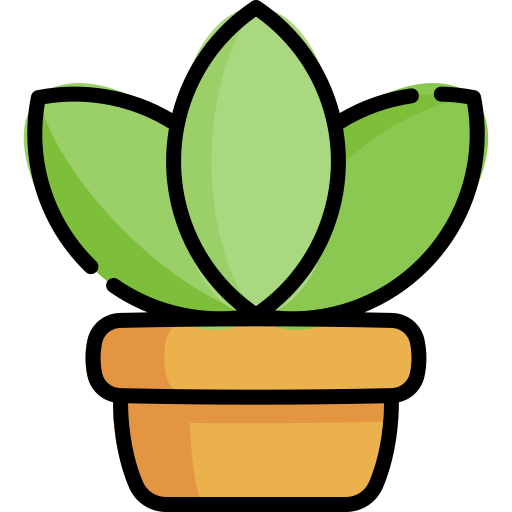Do Snake Plants Like Humidity?
Short Answer: Yes, but in moderation. Snake plants are resilient and can tolerate dry air, but they thrive in stable, moderate humidity levels of around 40-50%. Extremes, both high and low, can cause problems.
Snake plants, also known as Dracaena trifasciata (formerly Sansevieria trifasciata), are celebrated for their incredible resilience and striking architectural foliage. Their reputation as nearly indestructible houseplants makes them a favorite for beginners and seasoned plant enthusiasts alike. This toughness stems from their native habitat in the arid and semi-arid regions of West Africa, where they evolved to withstand dry conditions and infrequent rainfall. Given this background, a common question arises: do snake plants like humidity?
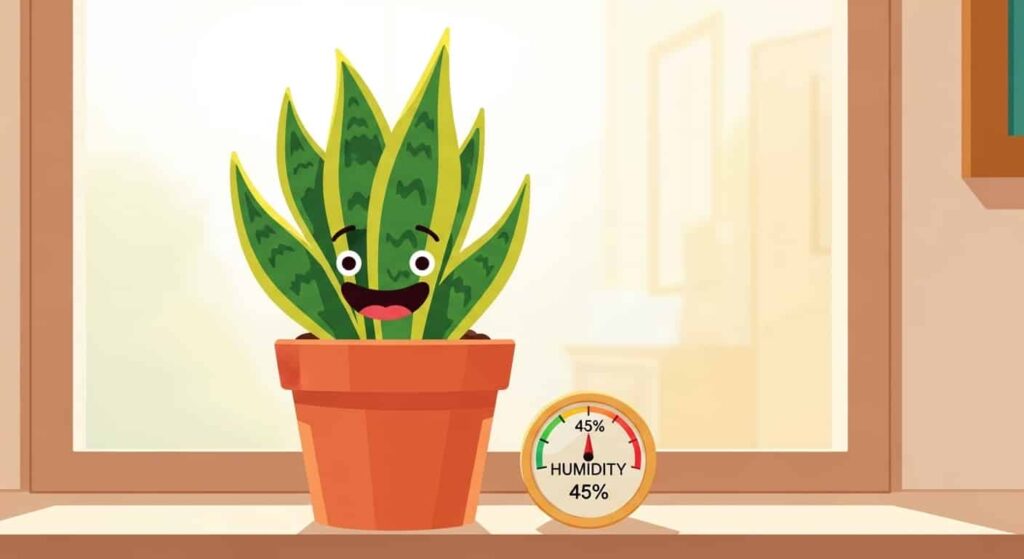
Understanding the ideal snake plant humidity requirements is crucial for unlocking their full growth potential. While they can certainly survive in the dry air common in many homes, especially during winter, providing the right amount of ambient moisture can make the difference between a plant that merely survives and one that truly thrives. This comprehensive guide will explore every facet of snake plant humidity, from the scientific reasons it matters to practical tips for creating the perfect environment for your green companion.
We will delve into how humidity influences a snake plant’s health, define the ideal humidity range, and teach you how to spot the tell-tale signs of imbalance. You will also discover proven strategies for managing moisture levels and learn how different varieties and conditions can alter your plant’s needs.
How Fast Do Snake Plants Grow: 11 Amazing Growth Facts That’ll Speed Your Success
The Science Behind Humidity and Snake Plant Health
To understand if a snake plant likes humidity, we first need to look at how moisture in the air affects its basic biological functions. Humidity directly impacts a process called transpiration, which is essentially how a plant breathes and releases water vapor. This process is vital for drawing water and nutrients up from the roots to the leaves.
Snake plants have a unique adaptation called Crassulacean Acid Metabolism (CAM) photosynthesis. Unlike most plants that open their stomata (tiny pores on their leaves) during the day to take in carbon dioxide, snake plants open them at night. This clever strategy minimizes water loss in hot, dry climates. However, the ambient humidity still plays a significant role.
How Low Humidity Affects Snake Plants
When the air is excessively dry (typically below 30% relative humidity), the moisture gradient between the leaf’s interior and the surrounding air becomes steep. This causes the plant to lose water more rapidly through its stomata, even with its water-saving adaptations. This accelerated water loss can lead to several issues:
- Dry, Crispy Leaf Tips: The tips and edges of the leaves are the furthest points from the roots, so they are often the first to show signs of dehydration. Persistent low humidity can cause them to turn brown and become brittle.
- Stunted Growth: When a plant is constantly losing water, it enters a state of stress. It will conserve energy by slowing down or halting new growth to prioritize survival.
- Dust Accumulation: Dry air often corresponds with more airborne dust. This dust can settle on the broad leaves of your snake plant, blocking light and hindering photosynthesis.
- Increased Susceptibility to Pests: Stressed plants are more vulnerable to pests like spider mites, which thrive in dry conditions.
How High Humidity Affects Snake Plants
On the other end of the spectrum, excessively high humidity (above 60-70%) can be just as detrimental, if not more so. Because snake plants are adapted to arid environments, they are not equipped to handle consistently damp conditions. High humidity, especially when paired with poor airflow and overwatering, creates a perfect storm for fungal and bacterial diseases.
- Root Rot: High ambient moisture slows down the evaporation of water from the soil. If the soil stays waterlogged, the roots are deprived of oxygen and begin to rot. This is one of the most common and fatal issues for snake plants.
- Fungal Diseases: Damp conditions encourage the growth of fungal pathogens. You might see issues like powdery mildew or fungal spots appearing on the leaves.
- Mushy Leaves and Crown Rot: When the air is too moist, water can collect at the base of the plant’s rosette, leading to crown rot. The base of the plant will turn black and soft, and the leaves may become mushy and fall over.
So, does a snake plant like humidity? Yes, it appreciates a balanced amount that supports its functions without creating a risky, overly damp environment.
Finding the Sweet Spot: Ideal Snake Plant Humidity Levels
The key to healthy growth is not about creating a tropical jungle but about providing stability within an optimal range. For most homes, the ambient humidity already falls close to what a snake plant prefers.
Here is a simple breakdown of the ideal snake plant humidity requirements:
- Survival Range (30% – 60%): Snake plants can generally tolerate a wide range of humidity levels. They will survive in dry air around 30% and can handle temporary spikes up to 60%.
- Optimal Growth Range (40% – 50%): For consistent, healthy growth and vibrant foliage, aim to maintain a stable humidity level between 40% and 50%. This range is the sweet spot that mimics the more favorable conditions in their native environment, reducing stress and supporting efficient photosynthesis.
- Caution Zone (Above 60%): If your room’s humidity consistently stays above 60%, you must be vigilant. This level significantly increases the risk of rot and fungal issues. In such cases, improving air circulation or even using a snake plant dehumidifier might be necessary.
To accurately know your home’s humidity levels, a small investment in a digital hygrometer is invaluable. These inexpensive devices give you a real-time reading of both temperature and relative humidity, taking the guesswork out of your plant care routine.
Visual Clues: Is Your Snake Plant’s Humidity Wrong?
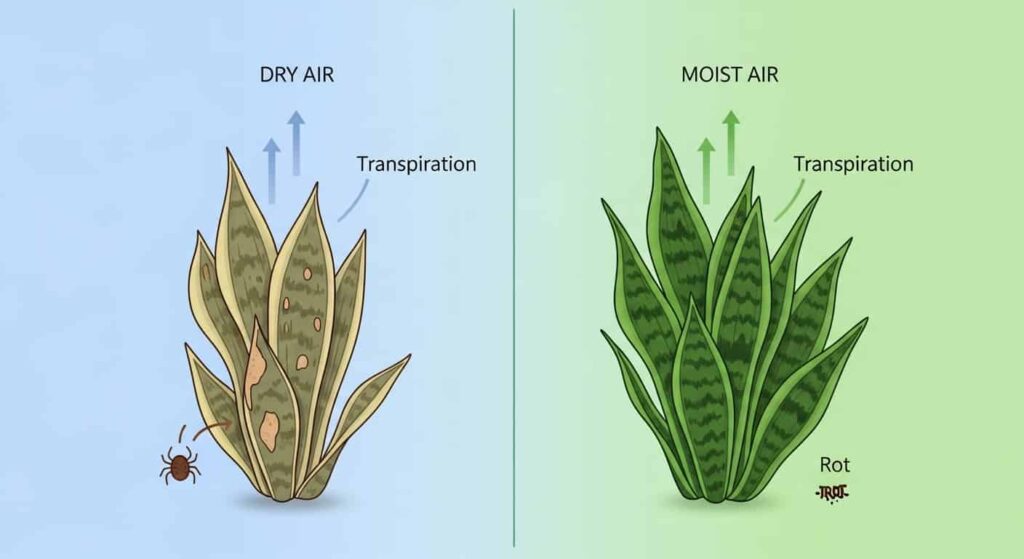
Your snake plant is excellent at communicating its needs through visual cues. Learning to read these signs will help you diagnose and correct humidity-related problems before they become severe.
Signs of Too Little Humidity
- Brown, Crispy Tips and Edges: As mentioned, this is the classic sign of dry air. The plant is losing water faster than its roots can absorb it. While you cannot reverse the damage on existing leaves, you can prevent it from affecting new growth.
- Wrinkled or Curling Leaves: In more severe cases of dehydration, the leaves may start to look slightly wrinkled or curl inward as the plant’s cells lose turgidity.
- Dull, Lackluster Foliage: A happy, well-hydrated snake plant has vibrant, firm leaves. Dry conditions can cause them to look dull and lifeless.
- Increased Spider Mite Activity: If you notice fine webbing on your plant, especially on the undersides of leaves, you likely have a spider mite infestation, which is a common problem in dry environments.
Signs of Too Much Humidity
- Mushy, Yellowing Leaves: This is a major red flag. Leaves that become soft, yellow, and waterlogged, especially near the base, are a strong indicator of overwatering, often made worse by high humidity.
- A Black, Soft Base (Crown Rot): If the central rosette, where new leaves emerge, turns black and feels squishy, your plant is suffering from crown rot. This condition is often fatal and is caused by excess moisture sitting at the base of the plant.
- Foul Odor from the Soil: A sour or rotten smell emanating from the pot is a clear sign of root rot, where the soil has remained too wet for too long.
- Fungal Spots or Powdery Mildew: Small brown or black spots on the leaves or a white, powdery coating can indicate a fungal infection thriving in the damp conditions.
By regularly inspecting your plant, you can catch these early warnings and adjust your care routine accordingly. The question of do snake plants need humidity is really about needing the right humidity.
7 Proven Tips for Managing Snake Plant Humidity
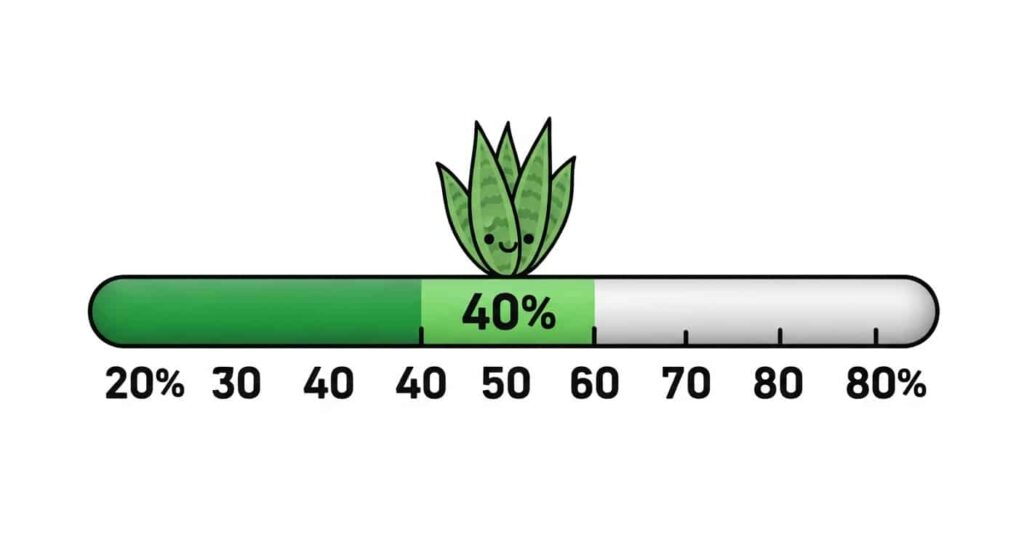
Now that you understand the “why” and “what” of snake plant humidity, let’s move on to the “how.” Managing humidity doesn’t have to be complicated. Here are seven effective and practical methods to create the perfect environment for your snake plant.
1. Measure and Monitor with a Hygrometer
This is the most important first step. You cannot manage what you do not measure. Place a digital hygrometer near your snake plant to get an accurate reading of the room’s conditions. This will tell you whether you need to increase, decrease, or simply maintain the current humidity level. Check it periodically, especially as the seasons change.
2. Choose the Right Location
Strategic placement is a simple yet powerful way to control your plant’s environment.
- Avoid Problem Areas: Keep your snake plant away from direct sources of dry or hot air, such as heating vents, radiators, and fireplaces. Also, avoid drafty windows or doors where temperatures fluctuate wildly.
- Consider Kitchens and Living Rooms: These areas often have moderate and relatively stable humidity levels, making them excellent choices.
- Be Cautious with Bathrooms: While a bathroom’s humidity might seem beneficial, it can often be too high and inconsistent. A bathroom is only a suitable location if it has excellent ventilation and receives plenty of bright, indirect light. Without these, it’s a recipe for root rot.
3. Prioritize Air Circulation
Good airflow is a non-negotiable partner to humidity. Stagnant, moist air is the primary cause of fungal diseases. Ensure your plant isn’t crammed together with many other plants in a way that restricts air movement. You can run a small fan on a low setting for a few hours a day to keep the air circulating, or simply open a window (as long as it’s not creating a cold draft). This is especially critical if your home’s humidity is naturally on the higher side (55% or more).
4. Group Plants Together
If your hygrometer indicates the air is too dry, one of the easiest ways to create a small pocket of higher humidity is by grouping several plants. As plants transpire, they release moisture into the air. When clustered, they create a mini-ecosystem with a slightly more humid microclimate. This is a gentle and natural way to boost humidity without any special equipment.
5. Use a Humidifier for Controlled Moisture
For homes that are consistently very dry (below 35%), especially during winter when central heating is running, a small humidifier is the most effective solution. You don’t need a large, powerful unit. A small, cool-mist humidifier placed several feet away from the plant can be set to maintain the ideal 40-50% humidity level. Many modern humidifiers have built-in hygrometers that automatically turn the unit on and off to maintain your desired level.
6. Employ a Pebble Tray (With Caution)
A pebble tray is a classic DIY method for increasing local humidity. To create one, fill a shallow tray or saucer with a layer of pebbles or gravel. Add water until it is just below the top of the pebbles. Place your snake plant’s pot on top of the pebbles. The key is to ensure the bottom of the pot is not sitting in the water, as this will lead to waterlogged soil. As the water in the tray evaporates, it will gently raise the humidity in the immediate vicinity of the plant.
7. Reconsider Misting
Misting is a commonly suggested humidity hack, but for snake plants, it’s generally not recommended. Misting provides only a very temporary spike in humidity and can cause more harm than good. Water droplets sitting on the leaves for extended periods, especially in the central cup of the rosette, can encourage fungal spots and crown rot. Stick to more stable and effective methods like grouping plants or using a humidifier.
Special Cases: When Humidity Requirements Change
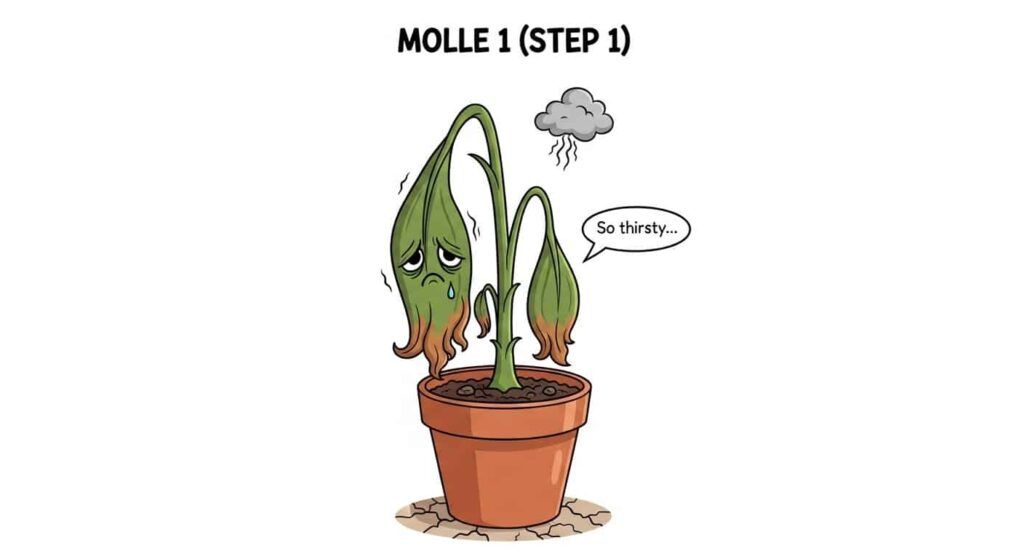
Not all snake plants are created equal, and their environment can significantly influence their needs. The general guideline of 40-50% humidity is a great starting point, but you may need to make adjustments based on these factors.
Different Snake Plant Varieties
While most Dracaena trifasciata varieties have similar needs, some can be more sensitive than others.
- Thin-Leaved Cultivars: Varieties like ‘Bantel’s Sensation’ or certain cylindrical types with thinner leaves have less surface area to store water. They may be slightly more susceptible to drying out in low humidity and might appreciate being closer to the 50% mark.
- Highly Variegated Varieties: Cultivars with extensive variegation (large areas of yellow or white) have less chlorophyll, which can sometimes make them slightly less vigorous. Providing optimal conditions, including stable humidity, can help them thrive.
- Dwarf Varieties: Smaller plants like the ‘Hahnii’ or bird’s nest snake plant have smaller root systems. They can be more sensitive to both overwatering and underwatering, so maintaining a stable environment with moderate humidity is particularly beneficial.
Plant Size and Age
- Young or Newly Propagated Plants: Small, young plants or recently rooted cuttings have underdeveloped root systems. They are more vulnerable to environmental stress. Providing a stable, moderately humid environment (around 50%) can help them establish themselves more quickly.
- Large, Established Plants: A large, mature snake plant with a robust root system is far more resilient. It can tolerate a wider range of conditions, including brief periods of very low or high humidity, without showing signs of stress.
Using a Snake Plant Dehumidifier
In some climates or homes, the problem isn’t low humidity—it’s high humidity. If your home is consistently above 60-65% humidity and you’re struggling with fungal issues or slow-drying soil, a snake plant dehumidifier can be a lifesaver. You don’t need a large industrial unit. A small, portable dehumidifier placed in the room can help lower the ambient moisture to a safer level for your snake plant, protecting it from the dangers of rot and disease.
Conclusion: Balance is the Key to a Happy Snake Plant
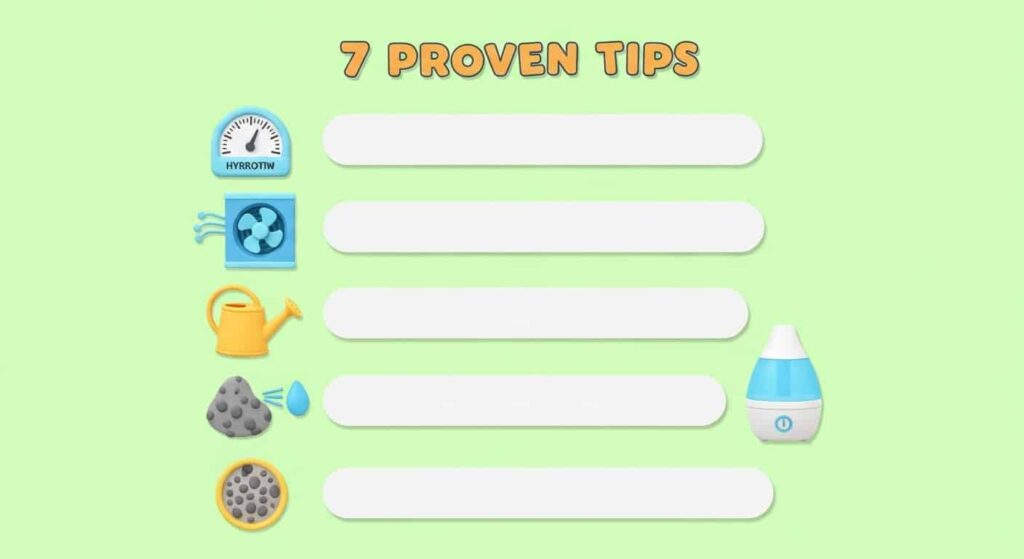
So, let’s return to our central question one last time: Do snake plants like humidity? The definitive answer is that they appreciate a stable, moderate level of humidity. They are not the humidity-loving tropicals that require a steamy environment, nor are they true desert cacti that demand bone-dry air. They thrive in the middle ground.
By aiming for a consistent humidity level of 40-50%, you provide your snake plant with an environment that supports healthy transpiration, reduces stress, and fortifies it against pests and diseases. Remember that humidity does not exist in a vacuum; it works in concert with proper watering, adequate light, and good air circulation. Mastering the balance of these four elements is the true secret to cultivating a stunning and resilient snake plant.
Start by measuring your home’s humidity with a hygrometer. From there, use the simple tips outlined above—from strategic placement to grouping plants—to make small adjustments. By paying attention to the subtle cues your plant gives you, you can create the perfect conditions for it to not just survive, but to flourish for years to come.
FAQs
Do snake plants need more humidity than other common houseplants?
Not at all. In fact, snake plants are far more tolerant of low humidity than many popular houseplants like ferns, calatheas, or orchids. Their natural adaptation to arid climates makes them an excellent choice for homes with drier indoor air.
Will misting my snake plant help with humidity?
Misting is not recommended for snake plants. It only raises humidity for a very short time and can lead to problems like fungal spots on the leaves and crown rot if water collects in the plant’s central rosette. It is safer and more effective to use a pebble tray, group plants, or use a humidifier on a low setting.
Can a snake plant survive in a very humid bathroom?
A snake plant can survive in a bathroom, but it’s a risky location. For it to work, the bathroom must have very bright, indirect light and excellent ventilation to prevent the soil from staying wet and the air from becoming stagnant. Without sufficient light and airflow, the combination of high humidity and moist soil will likely lead to root rot.
What humidity level is considered too low for a snake plant?
While snake plants are tough, prolonged periods with humidity below 25-30% can cause stress. The most common symptom of excessively dry air is the browning and crisping of the leaf tips. Occasional dips below this level are usually fine, but consistently dry air should be addressed.
What is the safest way to raise humidity for my snake plant?
The safest methods are those that provide a gentle and stable increase. Grouping your snake plant with other plants is a great natural approach. Using a pebble tray (ensuring the pot is not sitting in water) is another safe option. For a more controlled solution in very dry homes, a cool-mist humidifier set to maintain 40-50% humidity is the most effective and safest choice.
